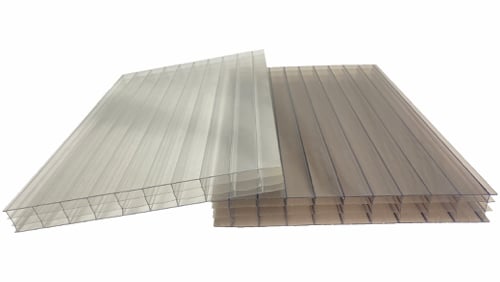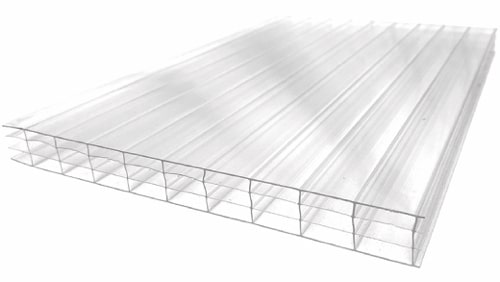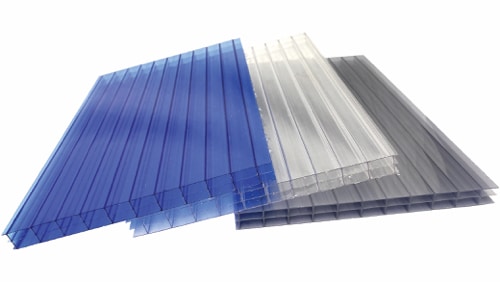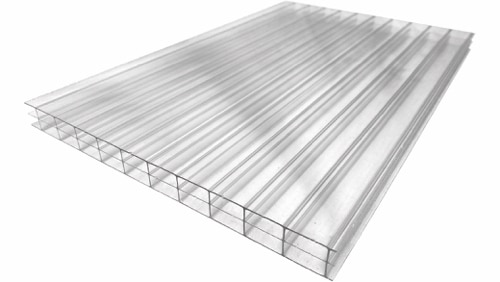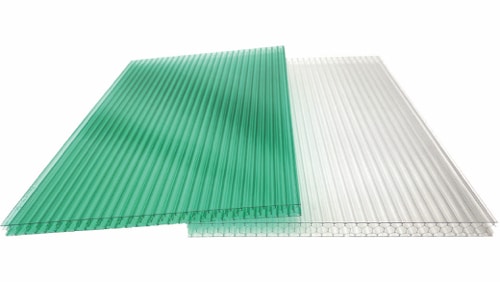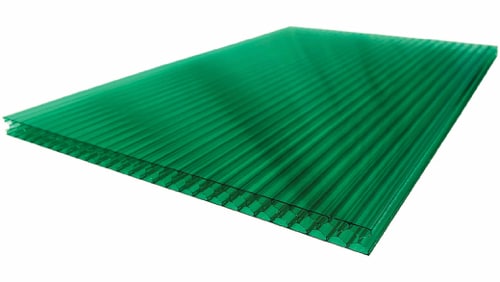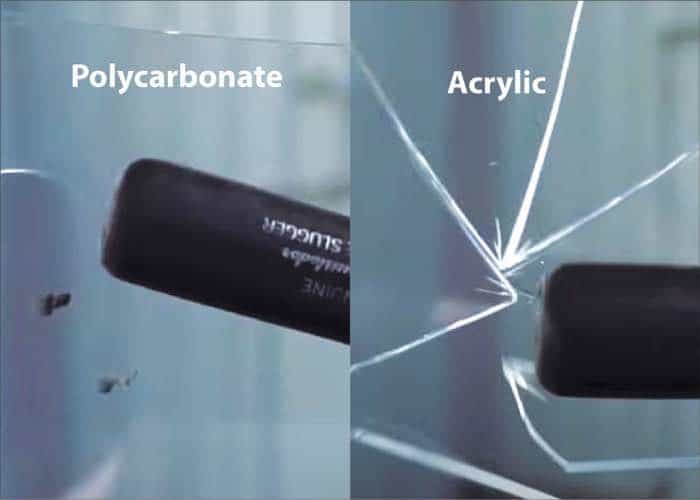Polycarbonate and Acrylic are among the clearest of all thermoplastics currently available on the market, and are similar in quite a few properties.
The similarities shared means that the area of use sometimes overlap, and it is also because of these similar characteristics and outlook that people have a hard time differentiating between one or the other, and also fail to notice the dissimilarities between them to make an educated, correct choice.
The following article is a brief introduction and comparison of these two excellent materials and how they differ.
Polycarbonate vs. Acrylic
Polycarbonate is often compared to Acrylic among other plastics and below is a brief comparison of how the properties of these two plastics differ.
Please note that all of the information and properties listed below only fits sheets made from 100% Virgin Material. Polycarbonate sheets made with recycled material are very prone to yellowing and breaking. As for Acrylic, some unscrupulous manufacturers add either melamine or polyester resin to lower costs; what people don’t know is that these additives lowers the clarity (yellowing) and lifespan of the Acrylic.
Strength
Acrylic and Polycarbonate are both half the weight of glass and yet both of these plastics are much stronger than glass. Acrylic has 17 times the impact resistance of glass. Polycarbonate has 250 times the impact resistance of glass and 10 times over FRP. Acrylic is very rigid whereas polycarbonate can be bought in flexible grades. Acrylic cracks more easily than polycarbonate under stress.
Light & Clarity
Acrylic has slightly better clarity than glass, with a light transmittance of 92%. Polycarbonate has a light transmittance of 88%, though the same clarity can be achieved with the help of post processed coating. It must be noted that for greenhouse applications, the light diffusing properties of polycarbonate actually benefits vegetation because direct sunlight creates burning effects. Acrylic can be polished to restore its clarity, while polycarbonate cannot. I would argue that when used as roofing applications, cleaning with water from afar is already a burden in the desert, let alone climbing up to polishing the surface, so there’s no real advantage with this comparison.
Climate
In the recent past, most greenhouses are being constructed using twin-wall plastics with polycarbonates being the most common types plastics being used in the agricultural industry. This is mainly due to the better insulation properties it has to offer. Polycarbonate sheets have good insulation properties. They are neither affected by the fluctuating environmental temperatures nor the humidity.
Working with Acrylic & Polycarbonate
Acrylic can be used at temperatures ranging from -34°C (−29.2 °F) to 88°C (190 °F). It may expand and contract with changes in temperature although it won’t permanently shrink over time. Polycarbonate can handle temperatures ranging from −40 °C (−40 °F) to 115–130 °C (239–266 °F). Polycarbonate is also highly resistant to chemicals such as gasoline and acids.
Cutting
Both acrylic and polycarbonate can be cut with conventional tools such as saws or routers, though acrylic cuts easier than polycarbonate. Polycarbonate fights the initial push of a saw or router at the start of a cut.
Drilling
Acrylic will crack if it is drilled near an edge or with a drill bit not designed for plastic. Polycarbonate typically does not crack when being drilled even if drilled close to the edge with a standard drill bit.
Polishing
The edges of acrylic can be polished smooth if necessary; polycarbonate cannot be polished.
Heat bending
Heat bending works better with acrylic than polycarbonate. Polycarbonate can be cold formed or bent without heating.
Gluing
Gluing with cements designed for acrylic and polycarbonate, acrylic gives a cleaner glue joint than polycarbonate.
Cleaning
Both acrylic and polycarbonate are easy to clean. The best choice for cleaning is a microfiber or 100-percent cotton cloths. Acrylic has a low chemical resistance and needs more specific cleaners. When cleaning acrylic, it is best to use only mild soap and water or a plastic cleaner. Polycarbonate has a higher chemical resistance than acrylic; harsher cleaners containing chemicals such as ammonia can clean it. Neither plastic should be cleaned with solvents.
Durability
Both acrylic and polycarbonate are weather resistant and expand and contract with temperature changes without long-term or permanent shrinkage. Both acrylic and polycarbonate can scratch, so wool rags and paper towels, which are made from abrasive binding agents, should be avoided. Acrylic is more likely to chip than polycarbonate because it is less impact-resistant. It does not scratch easily, however, and will not yellow over time. However, with current technology and advanced UV coating, polycarbonate sheets can last more than 10 years under extreme conditions. Polycarbonate sheets have low flammability and are self-extinguishing, while acrylic will burn slowly and is not recommended in areas where flames may be present.

